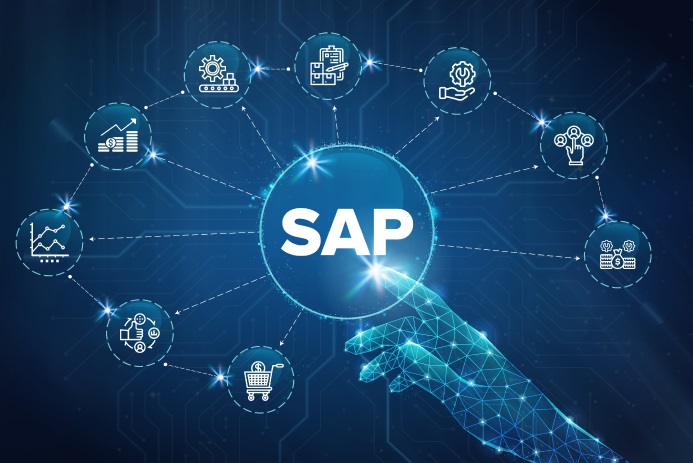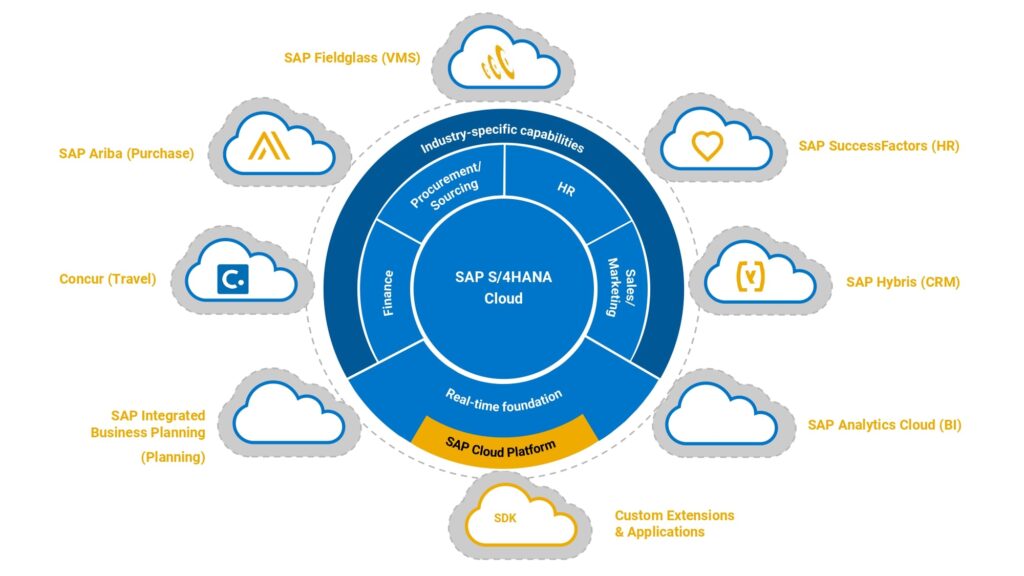Introduction
In today’s hyper-competitive digital economy, the ability to adapt, innovate, and operate efficiently has become a crucial differentiator for businesses. Enterprise Resource Planning (ERP) systems, once considered mere back-office support tools, have evolved into strategic enablers of growth, agility, and competitive advantage. Leading this transformation is SAP S/4HANA, a next-generation intelligent ERP suite designed to meet the complex demands of modern enterprises.
This comprehensive article explores everything you need to know about SAP S/4HANA—from its core architecture and unique capabilities to industry use cases, deployment models, and implementation challenges. Whether your organization is in banking, manufacturing, retail, healthcare, or public services, understanding how SAP S/4HANA can revolutionize your operations is key to thriving in the digital age.
Finally, discover how RaeonTech stands ready to be your strategic technology partner for successful SAP S/4HANA implementation, providing expert guidance, seamless integration, and continuous support.

What is SAP S/4HANA?
SAP S/4HANA stands for SAP Business Suite 4 SAP HANA. It is a next-generation ERP system developed by SAP, designed to run exclusively on SAP’s in-memory HANA database platform. Launched in 2015 as the successor to the traditional SAP ECC suite, S/4HANA represents a major leap in ERP technology by combining a simplified data model with real-time analytics and a modern user experience.
At its core, SAP S/4HANA leverages the power of in-memory computing—a technology that stores and processes data in RAM rather than on traditional disk storage. This enables extremely fast data access and transaction processing, which dramatically improves system responsiveness and supports real-time business insights.
Key Features of SAP S/4HANA
- Simplified Data Model: Reduces redundancy by collapsing data tables, leading to faster processing and easier maintenance.
- Real-time Analytics: Embedded analytics allow users to run reports and analyze data instantly without impacting transactional performance.
- Modern User Experience: Powered by SAP Fiori, the interface is intuitive, role-based, and mobile-friendly.
- Integration with Emerging Technologies: Supports AI, machine learning, robotic process automation (RPA), and IoT for smarter business processes.
- Flexible Deployment: Available on cloud, on-premise, or hybrid infrastructure models to suit different business needs.
Why Enterprises Are Migrating to SAP S/4HANA
The shift to SAP S/4HANA is driven by a combination of technological advancement, business needs, and market dynamics. Here are the primary reasons enterprises are making the transition:
1. Real-Time Decision Making
In a digital-first world, businesses can no longer afford delays between data generation and decision-making. SAP S/4HANA’s in-memory database enables instant access to both transactional and analytical data, providing executives and operational teams with real-time insights. This agility improves responsiveness to market changes, customer demands, and operational bottlenecks.
2. Simplified IT Landscape
Legacy ERP systems often suffer from complex data architectures with numerous tables and layers, causing slower performance and higher maintenance overhead. SAP S/4HANA simplifies this with a streamlined data model that reduces tables from thousands to hundreds, which translates into better performance and easier upgrades.
3. Future-Ready Technology
SAP S/4HANA is designed with innovation at its core. It integrates seamlessly with AI, ML, RPA, and IoT, helping companies automate routine tasks, predict market trends, optimize supply chains, and enhance customer experiences.
4. Scalability and Flexibility
Businesses today need ERP systems that can scale with growth and adapt to changing IT strategies. SAP S/4HANA supports multiple deployment options including public cloud, private cloud, on-premise, and hybrid models, offering organizations the flexibility to choose what best fits their needs and budgets.
5. Enhanced User Experience
SAP Fiori revolutionizes the user interface by offering personalized, simple, and mobile-accessible apps. This boosts user adoption, reduces training costs, and increases productivity.
Industry Applications of SAP S/4HANA
SAP S/4HANA is versatile and customizable, making it applicable across many sectors. Here’s a deeper look into how it’s used in different industries:
Banking and Financial Services
Banks and financial institutions rely heavily on compliance, risk management, and data accuracy. SAP S/4HANA supports:
- Real-time financial reporting and regulatory compliance
- Integrated risk management frameworks
- Streamlined loan and asset management processes
- Improved customer insights via real-time analytics
The platform’s agility allows banks to innovate in product offerings while ensuring data security and governance.
Manufacturing
Manufacturing companies benefit from enhanced visibility into their supply chains and production lines. SAP S/4HANA enables:
- Real-time production monitoring and predictive maintenance
- Optimized inventory and demand forecasting
- Integrated quality control management
- Automated procurement and supplier collaboration
This leads to reduced downtime, increased output, and improved product quality.
Retail and Consumer Goods
For retail, customer experience and inventory management are critical. SAP S/4HANA facilitates:
- Omni-channel inventory and order management
- Personalized marketing and customer loyalty programs
- Real-time sales and supply chain analytics
- Efficient promotion and pricing strategies
Retailers can synchronize online and offline channels seamlessly for better customer engagement.
Healthcare and Life Sciences
Healthcare providers need to manage complex patient data securely while maintaining regulatory compliance. SAP S/4HANA offers:
- Integrated clinical and operational data management
- Compliance with health regulations such as HIPAA and GDPR
- Streamlined supply chain for pharmaceuticals and medical equipment
- Enhanced patient engagement through data insights
This fosters better patient outcomes and operational efficiency.
Oil, Gas, and Energy
The energy sector requires asset management and sustainability tracking. SAP S/4HANA helps with:
- Asset lifecycle and maintenance management
- Environmental compliance and sustainability reporting
- Optimized logistics and supply chain operations
- Real-time operational analytics
This supports resource optimization and regulatory adherence.
Public Sector
Government and public institutions benefit from transparent budgeting and service delivery. SAP S/4HANA provides:
- Efficient public financial management
- Transparent audit and compliance reporting
- Scalable infrastructure for digital services
- Citizen engagement through streamlined workflows
This drives better governance and citizen satisfaction.

Core Modules of SAP S/4HANA
SAP S/4HANA covers all enterprise functions with integrated modules, each designed for specific operational areas:
- SAP FI (Financial Accounting): Manages general ledger, accounts payable/receivable, asset accounting.
- SAP CO (Controlling): Cost center and profitability analysis.
- SAP MM (Materials Management): Inventory, procurement, and supplier management.
- SAP SD (Sales and Distribution): Order management, pricing, billing.
- SAP PP (Production Planning): Production scheduling and execution.
- SAP EWM (Extended Warehouse Management): Warehouse operations optimization.
- SAP HCM (Human Capital Management): Employee lifecycle and payroll.
- SAP TM (Transportation Management): Logistics and freight planning.
Together, these modules create a unified digital core enabling end-to-end business process integration.
Benefits of SAP S/4HANA Implementation
Implementing SAP S/4HANA offers a broad range of tangible benefits:
- Improved Efficiency: Automation reduces manual intervention, freeing up staff for strategic tasks.
- Faster Financial Close: Real-time data reconciliations accelerate month-end and year-end closing processes.
- Better Customer Insights: Data-driven analytics allow companies to tailor services and improve satisfaction.
- Cost Optimization: Reduced system complexity lowers total cost of ownership.
- Risk and Compliance Management: Real-time monitoring helps enterprises stay ahead of regulatory changes.
Implementation Challenges to Consider
Despite its advantages, implementing SAP S/4HANA is a major transformation effort and comes with challenges:
1. High Initial Investment
Licensing, consulting, migration, and training costs can be significant. Budgeting and phased implementation strategies help manage expenses.
2. Organizational Change Management
Employees need to adapt to new workflows and technologies. Strong training programs and leadership support are critical.
3. Data Migration Complexity
Moving from legacy systems requires meticulous planning to ensure data accuracy and integrity.
4. Customization Limits
While SAP S/4HANA encourages standardized processes, some unique business requirements may need custom extensions.
Deployment Models: Cloud, On-Premise, and Hybrid
Enterprises can deploy SAP S/4HANA according to their IT strategy and operational needs:
| Model | Advantages | Disadvantages |
|---|---|---|
| Cloud | Scalability, lower upfront cost | Data residency and custom limits |
| On-Premise | Full control and customization | Higher infrastructure costs |
| Hybrid | Flexibility, gradual transition | Complexity in integration |
SAP also offers RISE with SAP, a subscription-based service that bundles software, infrastructure, and business process transformation to simplify adoption.
Why Choose RaeonTech for Your SAP S/4HANA Journey?
At RaeonTech Pvt Ltd, we combine deep domain knowledge, SAP-certified expertise, and agile methodologies to deliver successful SAP S/4HANA projects tailored to your business needs:
- Industry-Specific Expertise: We understand the nuances of your sector and compliance requirements.
- End-to-End Implementation: From strategy and planning to deployment and ongoing support.
- Integration Specialists: Seamless connection with legacy systems, cloud platforms, and third-party applications.
- Flexible Engagement Models: Cloud, on-premise, or hybrid deployments.
- Post-Implementation Support: Performance tuning, training, and user helpdesk.
- Cost-Effective Solutions: Modular deployment, automation, and continuous optimization.
Partnering with RaeonTech ensures your SAP S/4HANA implementation is not just a technology upgrade but a business transformation.
The Future of SAP S/4HANA
SAP continues to innovate by embedding AI, ML, and advanced analytics deeper into S/4HANA. Upcoming trends include:
- Enhanced industry cloud solutions for specialized functionality.
- Greater interoperability with non-SAP systems.
- Low-code/no-code tools empowering citizen developers.
- Advanced predictive analytics for proactive decision-making.
Enterprises adopting SAP S/4HANA today will be well-positioned to leverage these innovations.
Conclusion
SAP S/4HANA is more than just an ERP system; it is the digital core that connects and accelerates every part of an enterprise. Its real-time analytics, simplified architecture, and integration with emerging technologies empower organizations to innovate, optimize operations, and compete in the digital economy.
While the journey to SAP S/4HANA requires significant investment and change management, the long-term gains in agility, efficiency, and insight far outweigh the initial challenges.
If your organization is ready to modernize its digital backbone and unlock the full potential of intelligent ERP, RaeonTech is your trusted partner for seamless SAP S/4HANA implementation and beyond.


